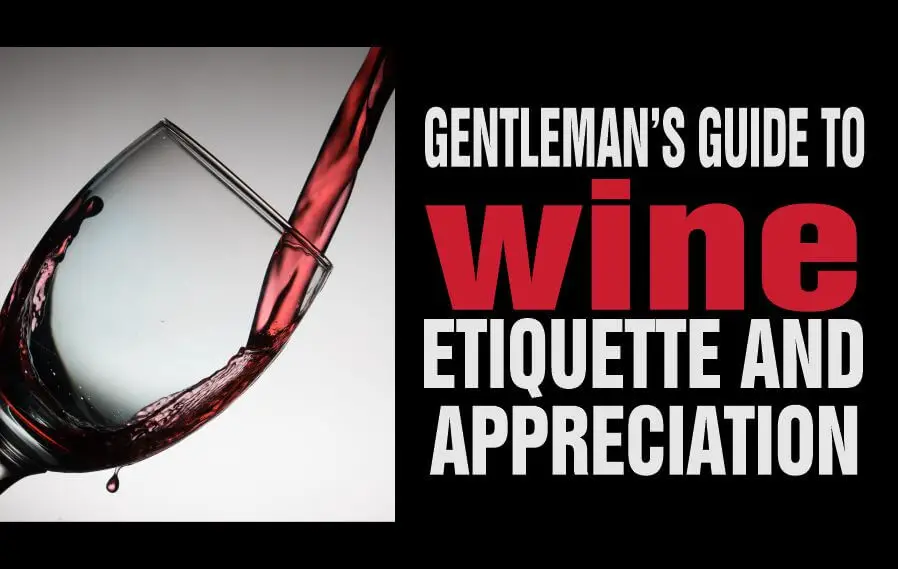Last updated on October 26th, 2025 at 06:37 pm
Wine etiquette is an essential aspect of enjoying and appreciating wine, whether at formal gatherings or casual dinners. Here is everything you need to know.
Wine etiquette reflects your taste, confidence, and respect for tradition.
As a gentleman, the way you handle, pour, and discuss wine says a great deal about your poise and understanding of social grace.
Whether you are at a dinner party, a formal event, or a quiet evening with friends, your approach to wine can shape the atmosphere.
From choosing the right glass to appreciating the aroma before each sip, proper etiquette shows attentiveness and class.
Practicing wine etiquette is not about showing off but about expressing respect for the craft and those who share the experience with you.
Every bottle becomes an opportunity to display elegance, courtesy, and genuine appreciation.
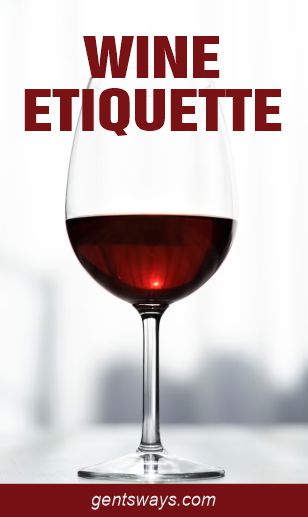
Table of Contents
- What is Wine Etiquette?
- The Rudiments of Wine Etiquette
- Properly Opening A Bottle of Wine
- Serving Wine with Style
- Decanting Wine
- Wine Tasting Etiquette
- Hosting a Wine-Tasting Event
- Wine Etiquette in Social and Professional Settings
- Cultural Considerations in Wine Etiquette
- Common Mistakes to Avoid in Wine Etiquette
- Wine Storage
- Conclusion
What is Wine Etiquette?
Wine etiquette is the set of practices and behaviors that guide how a gentleman selects, serves, and enjoys wine.
It includes proper pouring, holding the glass, tasting, and discussing wine respectfully.
Observing these customs shows courtesy, sophistication, and appreciation for both the beverage and the social setting.

Wine culture has steadily evolved into an integral aspect of social interactions and professional engagements.
As wine appreciation grows in popularity, understanding wine etiquette becomes important in various contexts, including dining experiences, business meetings, and social gatherings.
Knowing how to properly select, serve, and enjoy wine adds zest to your wine experience and demonstrates respect for the hosting environment and other participants.
This awareness can trigger positive interpersonal interactions and contribute to establishing a refined image.
Also, being familiar with wine etiquette helps you coordinate various wine-related situations confidently.
Like my dad would say, “Every man should raise men who are etiquette-conscious, including wine etiquette.”
Whether you are attending a formal event with a carefully curated wine list or enjoying a casual meal at a friend’s home, proper wine behavior can reflect a sense of refinement and cultural awareness.
In the following sections, the focus will shift to the various dimensions of wine culture.
By imbibing these essential aspects of wine etiquette, you can add to your wine experiences and interactions in wine situations.
The Rudiments of Wine Etiquette
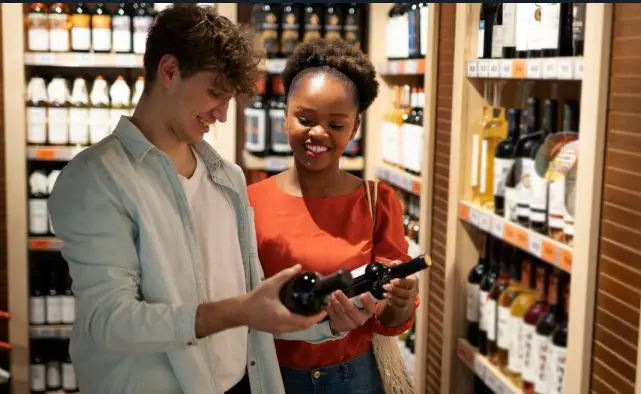
Choosing the Appropriate Wine
When it comes to wine etiquette, selecting the appropriate wine for any occasion is at the frontline.
Understanding the different types of events such as:
- Casual gatherings
- Formal dinners, or
- Celebrations
…. can drive your choice.
For instance, a light, fruity white wine might suit a summer picnic, whereas a red may be more fitting for a winter dinner party.
Also, considering guest preferences is important; having an awareness of whether your guests enjoy dry versus sweet wines can guide you in making a suitable choice.
Food Pairing
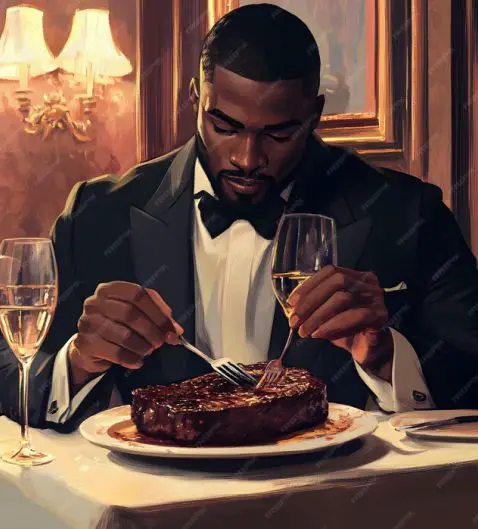
Food pairing is another critical element in wine selection. Knowing the basics of pairing wines with different types of cuisine can elevate the dining experience.
Generally, white wines are paired with lighter dishes, such as seafood or poultry, while red wines complement heartier fare like red meats or rich pasta dishes.
Additionally, rosé wines serve as versatile options that can bridge various food pairings, making them a popular choice for mixed gatherings.
Wine Types
Understanding the fundamental differences between wine types, including red, white, rosé, and sparkling wines, is vital in wine etiquette.
Each category offers unique characteristics influenced by grape varieties and production methods.
For instance, red wines exhibit deeper flavors due to skin contact during fermentation, while white wines are more refreshing and crisper.
Sparkling wines, on the other hand, bring a celebratory allure with their effervescence.
Wine Label
When choosing a wine, it is also helpful to read the wine label attentively.
Key components to look for include the region where the wine was produced, the grape variety, the vintage year, and the producer’s name.
Wine Gifting
When gifting wine as a modern gentleman, consider the recipient’s preferences.
Opt for a quality bottle that suits their taste. Personalize the gift with a handwritten note or a wine-related accessory.
Respect any dietary restrictions or cultural considerations. Present the wine in a tasteful gift bag or box. Remember, it’s the thought and effort that count. Cheers!
Related Posts
Gentleman’s Guide to Wine Terms
Gentleman’s Guide to Hand-kissing
How Wine Go from Grape to Bottles
Properly Opening A Bottle of Wine
- Begin by removing the foil or capsule covering the top of the bottle. Use a foil cutter or a knife to cut the foil just below the lip of the bottle.
- Insert the corkscrew into the center of the cork and twist it gently until only one turn of the screw remains visible.
- Utilize the mechanical advantage of the corkscrew to gradually and consistently extract the cork from the bottle.
- Avoid excessive force or sudden jerks, as this can cause the cork to break or the wine to spill.
- Once the cork is removed, wipe the lip of the bottle with a clean cloth or napkin to remove any residue or cork particles.
Serving Wine with Style
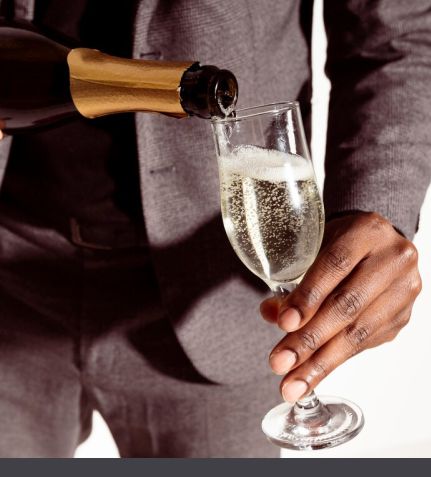
Serving wine is an important area of wine etiquette that will put you in the league of refined wine enthusiasts.
Choice of Glassware
The choice of glassware plays a role in influencing the wine’s aroma and flavor.
Red Wine Glass: Features a larger, rounder bowl to allow for more oxygen to interact with the wine, enhancing its complex flavors and aromas. The wider opening helps to mellow the wine’s tannins.
White Wine Glass: Smaller and more U-shaped to maintain cooler temperatures and focus the fresh, crisp flavors. The narrower opening helps to preserve the wine’s floral and citrusy aromas.
Rosé Wine Glass: Similar to white wine glasses but slightly shorter, designed to emphasize the fresh and fruity notes of rosé while maintaining its chill.
Sparkling Wine Glass (Flute): Tall and narrow to retain carbonation and direct bubbles upwards, preserving the fizz while concentrating the aromas at the top of the glass.
Holding Wine Glass

When it comes to holding your wine glass, it is recommended to grip the stem rather than the bowl. This is to avoid the transfer of temperature from your hand and to minimize fingerprints.
Hold the glass by the stem, and pinch between your thumb, index, and middle fingers.
If you are using a glass without a stem, let your gripping fingers be as close enough to the base and minimize contact with the bowl.
Related: Lamb and Wine Pairing Etiquette
Temperatures for Serving Different Wines
Serving wine at the appropriate temperature is crucial to fully appreciate its flavors and aromas.
Here are some general guidelines:
- Sparkling Wine and Champagne: Serve chilled between 40-50°F (4-10°C).
- White Wine: Serve chilled between 45-55°F (7-13°C). Lighter whites like Sauvignon Blanc are best served at the lower end, while fuller-bodied whites like Chardonnay can be served closer to the higher end.
- Rosé Wine: Serve chilled between 45-55°F (7-13°C), similar to white wine.
- Red Wine: Serve at a slightly cooler room temperature, between 55-65°F (13-18°C). Lighter reds like Pinot Noir are best served at the lower end, while fuller-bodied reds like Cabernet Sauvignon can be served closer to the higher end.
- Dessert Wines: Serve chilled between 40-50°F (4-10°C), similar to sparkling wine.
Wine Pouring
Pouring wine the right way involves several steps to ensure proper presentation and enjoyment:
Hold the bottle correctly: Grip the bottle by its base or lower half, keeping your hand away from the neck to avoid warming the wine.
Angle the bottle: Hold the bottle at a slight angle (about 45 degrees) above the glass.
Pour steadily: For red and white wines, pour about 1/3 of the glass, filling it less to allow swirling and proper aeration. For sparkling wine, pour slowly to prevent excessive bubbles, filling about 3/4 of the flute.
Twist at the end: When finishing the pour, gently twist the bottle to avoid drips.
Avoid overfilling: Ensure space for swirling, especially for red wines, which enhances the aromas.
For those handling wine bottles at gatherings, mastering the art of pouring is essential. It is advisable to fill the glass to one-third of its capacity to allow for the wine’s aromas to be fully experienced.
Handling Corkscrews
Finally, knowing how to handle corkscrews effectively will minimize mishaps.
A good corkscrew will make the process smooth and prevent cork breakage, ensuring an elegant wine-serving experience for all.
Decanting Wine
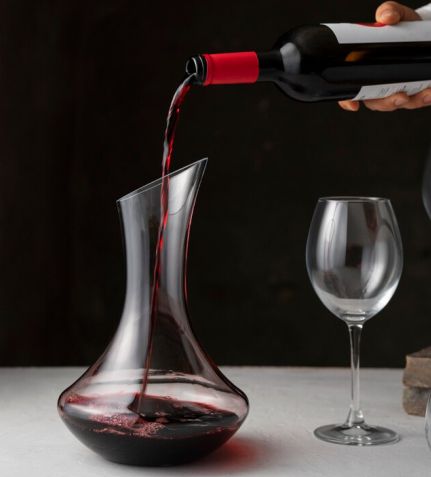
Decanting wine is the process of slowly pouring wine from its bottle into a separate container, a decanter, to separate the wine from any sediment and to allow the wine to breathe, enhancing its flavors and aromas.
It is especially important for older red wines or wines that benefit from aeration.
How to Decant Wine
Let the bottle stand upright: If possible, let the wine stand upright for at least 24 hours to allow sediment to settle at the bottom.
Choose a clean decanter: Ensure the decanter is clean and dry. Any residue could affect the wine’s taste.
Open the bottle carefully: Use a corkscrew to remove the cork gently without shaking the bottle to avoid disturbing the sediment.
Pour slowly: Hold the bottle at a slight angle and pour slowly into the decanter. Keep a light source (like a candle or flashlight) under the bottle’s neck to help you see when the sediment approaches.
Stop when sediment appears: When you see the sediment reaching the neck of the bottle, stop pouring to prevent it from entering the decanter.
Let the wine breathe: Allow the wine to sit in the decanter for 20 minutes to several hours, depending on the wine. This allows oxygen to enhance the flavors.
By decanting, you improve both the clarity and the taste of the wine, making for a more refined experience when serving.
Wine Tasting Etiquette
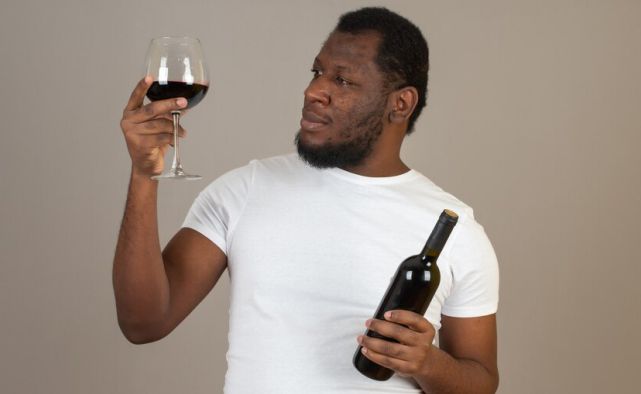
Tasting wine is an experience that engages the senses and enhances appreciation.
Proper wine-tasting etiquette involves a methodical approach, which can be summarized in five essential steps:
- Look
- Swirl
- Smell
- Sip, and
- Savor
Each step plays a crucial role in gauging the characteristics of the wine, ultimately contributing to a more profound understanding of its qualities.
Let’s examine them closely:
Looking
The first step, looking, involves observing the wine’s color and clarity.
If you can, hold the glass against a white background and observe the color and clarity before tilting the glass to observe the changes.
The hue can indicate the wine’s age and varietal, with red wines generally exhibiting shades ranging from deep purple to brick-red, while white wines usually display a spectrum from pale straw to rich golden tones.
Swirling
Following this, the swirling action aerates the wine, allowing volatile compounds to release their aromas.
This step is particularly important, as the act of swirling enhances the sensory experience and prepares the taster for the next stage.
Smelling
Bring the swirled glass to your nose and sniff, to observe different scents including fruit, spices, flowers, and more.
Smelling the wine is perhaps one of the most critical stages of the tasting process.
It is during this phase that wine enthusiasts can unravel a complex array of aromas, which may include fruit, floral, earthy, and spice notes.
It is beneficial to familiarize yourself with common wine descriptors such as “nose,” “bouquet,” and “aroma,” which help articulate the sensory profile of the wine being tasted.
Sipping
The next step, sipping, allows for the assessment of the wine’s taste and body.
Noting the balance of flavors and texture is essential in determining the wine’s overall quality.
Savoring
Finally, savoring the wine involves considering its finish, or aftertaste, which reveals further intricacies about the wine’s composition.
Throughout the tasting process, it is important to remain calm and composed, especially in social situations where spills or mishaps could occur.
If an accident happens, maintain poise and address the situation gracefully.
With these proper wine-tasting etiquette protocols in mind, you can confidently explore and enjoy the delightful world of wine.
Paying attention to these pairing principles not only elevates the dining experience but also invites greater exploration into the diverse world of wine. With a well-informed approach, anyone can confidently select a wine that will enhance their meal and delight their palate.
Hosting a Wine-Tasting Event
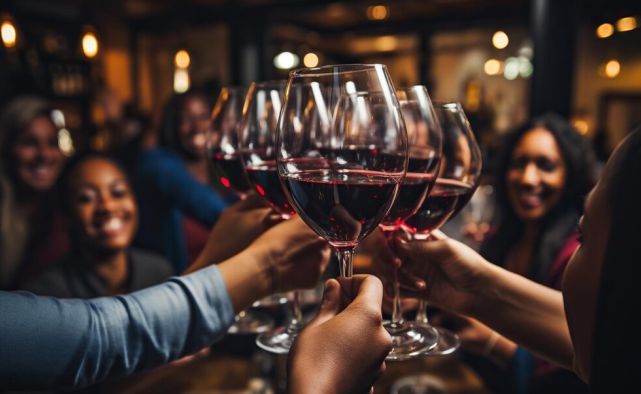
As a gentleman, you will organize wine-tasting events and it requires careful planning and attention to detail to ensure an enjoyable experience for your guests.
Here are tips to guide you:
Selecting Appropriate Wine Ranges
The first step is to select an appropriate range of wines, focusing on both variety and wine regions.
Consider offering a mix of red, white, and sparkling wines to cater to different preferences.
Choose Wines from Different Regions
Additionally, choose wines from diverse regions to create an exploratory aspect to the tasting.
This maintains interest but also aids in educating attendees about various wine styles and characteristics.
Tasting Order
The tasting order is central in facilitating a pleasant experience. Start with lighter wines and progress towards fuller-bodied options.
This helps the palate adjust gradually, enabling guests to appreciate the offerings of each selection.
Introduce Each Wine
Providing a brief introduction to each wine can further enhance the tasting, enabling guests to understand its background, flavor profile, and recommended food pairings.
Setting the Stage
Setting the stage for the event involves preparing essential items like glasses, wine pourers, and appropriate snacks.
Opt for standard tasting glasses, as they help guests assess color and aroma effectively.
Wine Pourers
Wine pourers can be beneficial in preventing spills while pouring, which can be distracting during the tasting.
Snacks
When it comes to snacks, select light accompaniments such as cheeses, crackers, or fruits, which complement the wines without overpowering their flavors.
Ensure an adequate supply of plain water for guests to cleanse their palates between tastings.
Seating Arrangement
To create a welcoming atmosphere, arrange seating that encourages conversation and engagement.
Provide Tasting Notes
Provide tasting notes for each wine, allowing guests to jot down their impressions and preferences.
Questions and Discussions
Encourage questions and discussions, creating an educational experience.
By focusing on these elements, your wine-tasting event can become not only a delightful social gathering but also an enriching exploration of the world of wine.
Wine Etiquette in Social and Professional Settings
Understanding wine etiquette is essential in both social and professional contexts, as it reflects one’s sophistication and respect for the occasion.
Social Settings
When dining at a restaurant, the process of ordering wine begins with selecting a suitable bottle that complements the meal.
It is advisable to consult the wine list ahead of time, and it is prudent to ask for the sommelier’s recommendations if one feels uncertain.
Engaging politely with the sommelier shows an appreciation for their expertise and can lead to a more enjoyable dining experience.
Upon ordering, it is important to observe proper etiquette when the wine is presented.
The server will typically show the label for verification. Take a moment to look at the bottle and confirm it is what was ordered.
If any doubts arise, do not hesitate to ask questions or request further clarification.
When the cork is removed, a careful assessment should occur. The aim is to check for cork taint, a quality defect that can spoil the wine’s flavors.
If the wine is faulty, it is appropriate to communicate this politely to the server without embarrassment.
In Professional and Corporate Settings
In formal and corporate settings, wine etiquette can be particularly crucial.
When attending events, knowing the basics of wine service, such as waiting for a signal from the host before drinking or adhering to the seating order, reinforces respect for the host’s hospitality.
When gifting wine, thoughtful consideration of the recipient’s preferences can enhance the gesture’s impact.
Likewise, when receiving wine, expressing gratitude is essential and can set the tone for future interactions.
By adhering to these guidelines, individuals can navigate wine-related situations gracefully, ensuring a pleasant experience for themselves and others.
Cultural Considerations in Wine Etiquette
Wine is not only a beverage but also a cultural symbol that varies across different regions.
Understanding the customs and traditions associated with wine in various cultures adds to the experience of wine tasting and dining.
In countries such as France, Italy, and Spain, wine etiquette reflects unique historical contexts and social norms that shape how wine is appreciated and consumed.
In France
In France, for instance, wine is an integral part of the meal, served to complement the flavors of the food rather than as a separate entity.
It is customary to pour wine at the table for others before serving yourself, demonstrating respect for fellow diners.
Also, the French take great pride in the terroir of their wines, so it is advisable to familiarize yourself with local varieties and producers when attending tastings or social gatherings.
In Italy
Italy places a strong emphasis on the communal experience of sharing wine, particularly at family gatherings.
A traditional Italian meal may involve several courses, each paired with a specific wine.
Understanding regional differences in wine preferences, such as the use of Chianti in Tuscany or Barolo in Piedmont, will enrich the dining experience.
Furthermore, it is customary to toast before drinking, and saying “Salute!” is a common phrase used during this social ritual.
In Spain
In Spain, wine plays a central role in social gatherings, with an emphasis on enjoying wine as part of a larger culinary experience.
The Spanish tradition of tapas encourages sharing small plates accompanied by regional wines.
It is important to note that making eye contact while toasting and expressing gratitude before drinking reflects cultural respect.
Awareness of these practices will help ensure that you navigate wine etiquette gracefully at any Spanish event.
Being mindful of these cultural details can improve your enjoyment and appreciation of wine during international tastings and gatherings, allowing for a more enriching and respectful interaction with fellow wine enthusiasts.
Common Mistakes to Avoid in Wine Etiquette
Beginners fall prey to several common mistakes that can lead to awkward situations in wine situations.
Incorrect Wine Temperature
One common error is the incorrect temperature for serving wine.
Red wines are best served slightly below room temperature, around 60-65°F, while white wines should be served chilled, typically between 45-50°F.
Failing to account for these temperatures can mask the wine’s flavors and aromas.
Failure to Follow Sequence During Wine Tasting
Another frequent misstep occurs during the wine-tasting process, where individuals may forget to observe the wine’s appearance, aroma, and taste sequentially.
It is advisable to first look at the wine’s color and clarity in the glass, swirl it gently to release the aromas, and then take a moment to inhale and appreciate the bouquet before tasting.
Skipping these crucial steps can detract from the overall tasting experience.
Serving Wines with the Wrong Dishes
Moreover, when it comes to food and wine pairing, many novices make the mistake of serving robust red wines with delicate dishes or overly tannic wines with spicy food.
A foundational rule of thumb is to pair lighter wines with lighter fare and fuller-bodied wines with heartier meals.
This alignment can greatly enhance both the wine and the food, leading to a more harmonious dining experience.
Filling the Glass Beyond the Three-quarter Mark
Lastly, etiquette dictates that one should avoid filling the glass beyond the three-quarter mark to allow room for aeration and to keep the wine from spilling.
Not Making Eye Contact with Whom You Are Toasting With
Additionally, when toasting, it is essential to make eye contact with the person you are toasting and avoid clinking glasses excessively, as this can come across as overly boisterous.
By being mindful of these common pitfalls, beginners can navigate the world of wine with greater confidence and enjoy the nuances that accompany wine service and tasting.
Also Read: Guides to Napkin Etiquette
Wine Storage
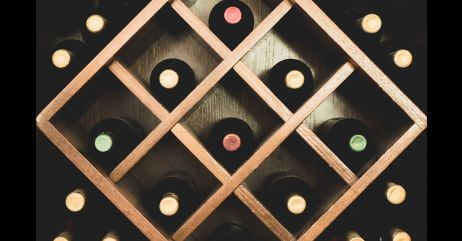
Every gentleman should know proper wine storage to preserve quality. Store bottles horizontally to keep corks moist and prevent air entry.
Keep wine away from direct sunlight, temperature fluctuations, and vibrations. The ideal storage temperature is around 55°F (13°C).
Invest in a wine fridge or cellar for long-term storage.
Maintain consistent humidity levels and organize bottles for easy access.
Cheers to being a true gentleman of the vine.
Frequently Asked Questions
What are the 5 S’s of wine appreciation?
The 5 S’s of wine appreciation are: See (observing the color and clarity), Swirl (agitating the wine to release aromas), Smell (inhaling the aromas), Sip (tasting the wine), and Savor (appreciating the flavors and finish).
What is the proper etiquette for wine?
Proper wine etiquette includes holding the glass by the stem, not overfilling the glass, tasting before serving others, and avoiding strong scents that may interfere with the wine’s aroma.
How do you drink and appreciate wine?
To drink and appreciate wine, start by observing its appearance, then swirl to release aromas. Smell the wine deeply, take small sips, and let the flavors linger. Pay attention to the wine’s characteristics and enjoy the experience.
Why is wine appreciation important?
Wine appreciation is important as it enhances the enjoyment of wine, deepens understanding of its complexities, and allows for a more nuanced experience. It can also foster social connections and cultural appreciation.
Conclusion
Mastering wine etiquette adds to personal enjoyment and social interactions, whether at a dinner party or a formal tasting.
From selecting the right glassware to knowing how to taste, serve, and pair wine with food, these practices elevate the wine experience.
Understanding subtle techniques like holding and swirling the glass shows respect for the wine and the occasion.
Additionally, being adaptable to cultural variations in wine etiquette demonstrates awareness and respect.
By applying these principles, individuals can turn ordinary wine moments into memorable experiences, deepening their appreciation for the beverage and its role in different social settings.
References:
- Gentleman’s Guide to Wines
- Demystifying the Wine Etiquette
- https://angiesomm.com/blogs/news/wine-tasting-etiquette
- https://www.winbirri.com/wine-tasting-etiquette/
- https://www.thinkitchen.in/blogs/latest/how-to-drink-wine?srsltid=AfmBOooi45djhKK62EJmpUQrGM6tja_UahmHNf285kpxEhvsd-G2_MmW
- https://www.napavalley.com/blog/sparkling-wine-etiquette-tips/
Pyo Merez is a men’s lifestyle enthusiast and writer about the gentleman’s place and impact on society. Raised by a distinguished gentleman dad, he offers unique insights into how the mind of a gentleman works and how societal norms shape gentlemen’s identity and vice versa.
Through his insightful articles, Pyo taps into the depths of gentleman culture to provide perspectives on etiquette and manners in modern society.

